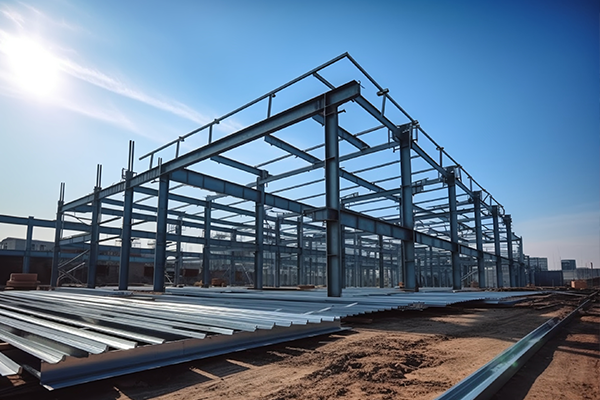NewsDetails
The Insulation Sealant Master: Unlocking the Energy Efficiency of PU/PIR Edge-Sealed Panels
author:Tianxing time:2025-06-08 18:48:26 Click:172
Polyurethane Edge-Sealed Panels are high-performance composite insulation boards widely used in construction. They typically consist of:
Core: A core of rigid polyurethane foam (PU) or the superior-performing polyisocyanurate foam (PIR). This material boasts an extremely low thermal conductivity, ranking among the most effective building insulation materials available.
Facings: The core is bonded (usually on both sides, sometimes one) to metal facings. Common facing materials include:
Pre-painted Steel: Galvanized or Galvalume® steel sheets coated with polyester (PE), silicone-modified polyester (SMP), or PVDF finishes for color and weather resistance.
Stainless Steel: Used for high-cleanliness or highly corrosive environments.
Other Boards: Such as magnesium oxide (MgO) board or cement fiber board (for specific fire resistance or decorative needs).
Edge-Sealing: This is a key defining feature. The panel's four edges (or specifically required edges) are fully filled and encapsulated with rigid polyurethane foam through an integral foaming process. The sealant bonds tightly to the top and bottom metal facings, creating a completely sealed, monolithic unit.
Key Features & Advantages:
Exceptional Thermal Performance: The PU/PIR core's ultra-low thermal conductivity provides far superior insulation compared to traditional materials (e.g., rock wool, glass wool, EPS/XPS), significantly reducing building energy consumption.
High Strength & Stiffness: The metal facings and PU/PIR core bond firmly with adhesives, forming a robust "sandwich" structure with high bending and compressive strength, and excellent overall rigidity. Ideal for building envelopes (wall and roof cladding).
Superior Fire Performance (Especially PIR): While PU is combustible, formulation adjustments (especially using PIR technology) and flame retardants enable it to achieve B1 (difficult to ignite) or higher fire ratings. PIR foam offers significantly better high-temperature resistance and flame retardancy.
Excellent Air & Water Tightness:
The integral polyurethane edge seal completely closes the panel edges, eliminating thermal bridging and dramatically enhancing overall insulation efficiency.
The seal effectively prevents moisture vapor and air infiltration through the edges, vastly improving waterproofing, moisture resistance, and long-term insulation stability.
Lightweight: Offers high strength and insulation relative to its weight, reducing structural load and transportation/installation costs.
Fast & Easy Installation: Typically uses concealed-fix or screw-fix systems for quick, efficient assembly. The quality edge seal simplifies joint treatment.
Durable & Aesthetic: Metal facings provide diverse color and texture options, are highly weather-resistant, and offer long service life.
Eco-Friendly: Excellent insulation contributes to building energy savings; some products use eco-friendly blowing agents.
Primary Applications:
Industrial & Logistics: Factories, warehouses, distribution centers (walls & roofs - most common).
Cold Chain & Food Processing: Cold storage, freezer rooms (walls & roofs - demands extreme insulation and tightness).
Clean Rooms: Electronics, pharmaceuticals, biotech (high-cleanliness required).
Commercial Buildings: Superstores, shopping malls, sports arenas (building envelopes).
Agricultural Buildings: Greenhouses, livestock facilities.
Prefabricated/Modular Construction: Rapidly built temporary or permanent structures.
Selection & Usage Considerations:
Core Type: Specify PU or PIR. PIR generally offers superior fire resistance and temperature tolerance but is slightly higher cost.
Fire Rating: Verify the product's certified fire rating standard (e.g., GB 8624 in China) and actual classification (B1, A2, etc.), selecting based on building type and fire safety regulations.
Facing Material & Thickness: Choose suitable metal facings (coating type) and thickness based on environment (corrosivity, cleanliness) and structural requirements.
Core Density: Density affects insulation performance and strength – balance is key.
Edge Seal Quality: Ensure the seal is uniform, fully filled, and firmly bonded to the facings – critical for air/water tightness and insulation effectiveness.
Manufacturer Quality: Select reputable manufacturers with stable processes and guaranteed quality.
Professional Installation: Must be installed by certified crews following specifications to ensure secure connections and proper sealing, maximizing panel performance.
Summary:
Polyurethane Edge-Sealed Panels, particularly those with PIR cores, are a leading solution for modern industrial buildings, cold chain logistics, and more, thanks to their exceptional thermal insulation, high strength/stiffness, strong fire performance, superior overall air/water tightness, and ease of installation. Their core value lies in the integral polyurethane edge-sealing technology, which maximizes comprehensive performance and long-term reliability. When selecting, prioritize core type, fire rating, facing quality, and manufacturer reputation.
 Recommended Products
Recommended Products
 Contact us
Contact us
—— Contact:Ms. Zhang
—— Tel:(+86)18399688883
—— Email:18399688883@163.com
—— Url:https://www.tianxingmaterials.com
—— Address:Horgos City, Ili Kazakh Autonomous Prefecture, Xinjiang, China







